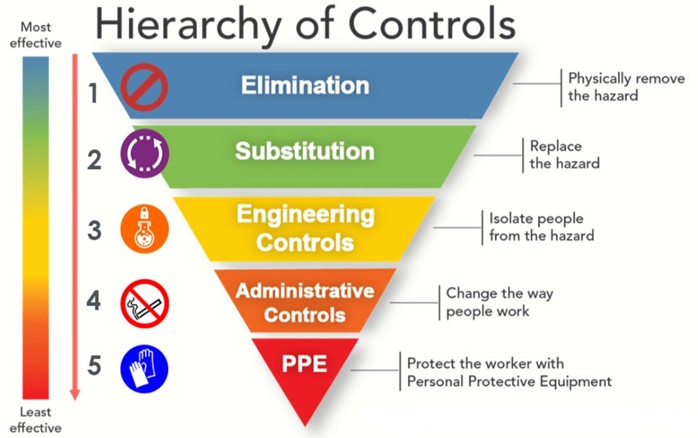Background
In the workplace, hazardous chemicals are considered substances, mixtures and articles used in the workplace (including by-products generated by processes in the workplace) that can be classified according to their chemical hazards.
Potential health hazards include: skin irritants, carcinogens or respiratory sensitisers that have an adverse effect on a worker’s health, as a result of direct contact with or exposure to the chemical, usually through inhalation, skin contact or ingestion.
Physicochemical hazards generally result from the physical or chemical properties, like flammable, corrosive, oxidising or explosive substances.
For further information, managers and workers should refer to the code of practice: Managing Risks of Hazardous Chemicals in the Workplace
Hazardous chemicals are classified and labelled in compliance with the Globally Harmonised System of Classification and Labelling (GHS). However, some workplace hazardous chemicals and dangerous goods may also be classified under the Australian Dangerous Goods Code. Irrespective of classification, managers must ensure workers’ exposure to hazardous chemicals is eliminated or minimised so far as is reasonably practicable.
Registers of Hazardous Chemicals
When hazardous chemicals are identified, handled, transported or stored on Ages Build worksites, a register of hazardous chemicals is developed and kept up to date.
The register must:
1 – Include a list of all hazardous chemicals and the current safety data sheet (SDS) for each one.
2 – Include the SDSs in the Australian format provided by the manufacturer, importer or supplier for each of those hazardous chemicals and dangerous goods
3 – Be readily accessible to workers involved in using, handling and storing hazardous chemicals
4 – Be readily accessible to anyone else who is likely to be affected by a hazardous chemical at the workplace or whoever asks for it
5 – Be reviewed whenever a new hazardous chemical is introduced or discontinued.
Details of the chemicals that may commonly be held are available in the SDS Library
Registers of Hazardous Chemicals
When hazardous chemicals are identified, handled, transported or stored on Ages Build worksites, a register of hazardous chemicals is developed and kept up to date.
The register must:
1 – Include a list of all hazardous chemicals and the current safety data sheet (SDS) for each one.
2 – Include the SDSs in the Australian format provided by the manufacturer, importer or supplier for each of those hazardous chemicals and dangerous goods
3 – Be readily accessible to workers involved in using, handling and storing hazardous chemicals
4 – Be readily accessible to anyone else who is likely to be affected by a hazardous chemical at the workplace or whoever asks for it
5 – Be reviewed whenever a new hazardous chemical is introduced or discontinued.
Details of the chemicals that may commonly be held are available in the SDS Library
Emergency Plans
Emergency response planning is detailed in the procedure Emergency Response. Site specific emergency response and evacuation plans are prepared as required.
Training
Ages Build employees are provided with the following training:
1 – Emergency Response
2 – Environmental Spill Response
Safe Works Method Statement for Ages Build activities include control measures for Hazardous Chemicals. Refer to the Safe Work Method Statement – General Works. Project specific SWMS are prepared as required.
In addition, all personnel are required to complete site specific induction training as specified in project documentation
Disposal
Ages Build identifies appropriate disposal facilities to dispose of hazardous chemicals appropriately. Refer to the NSW Environment Protection Authority (EPA) website for information on hazardous waste. When selecting a provider for the removal of an unknown substance, ensure they have the capacity to remove hazardous chemicals.
